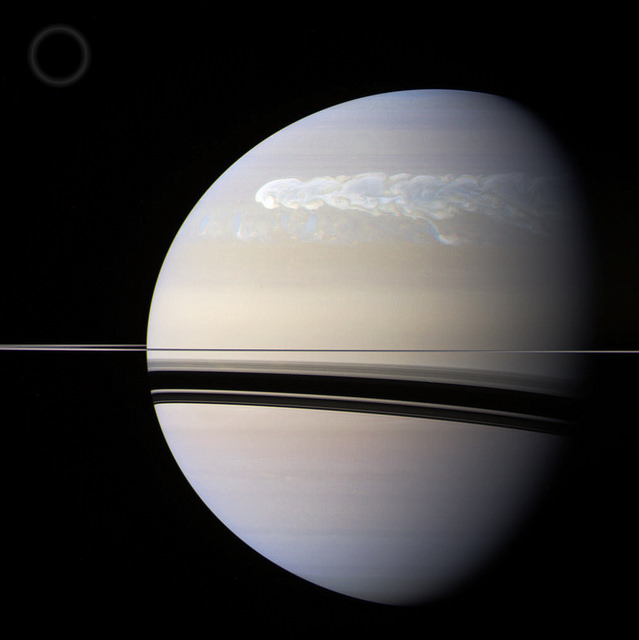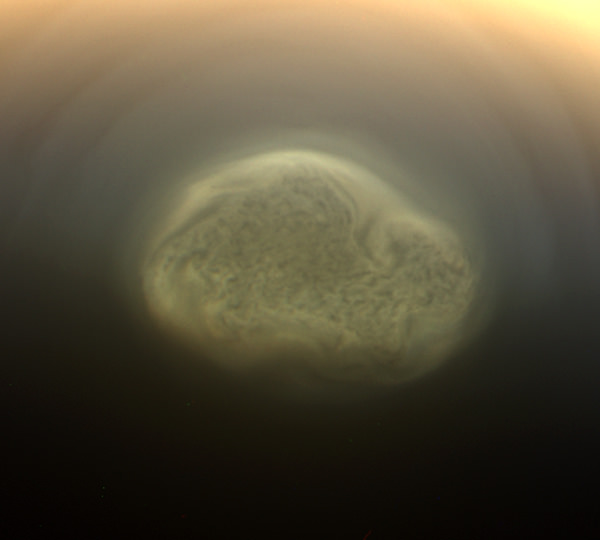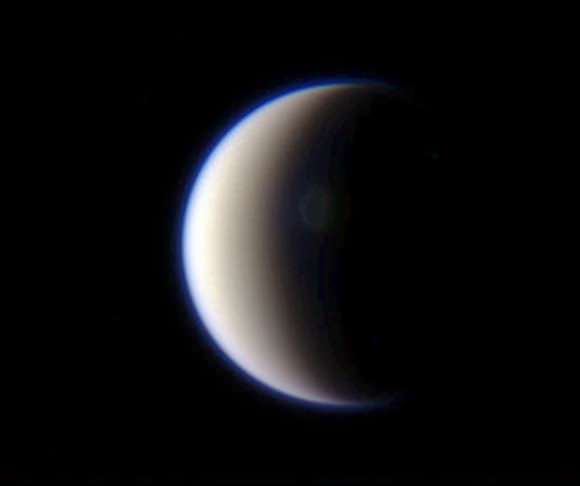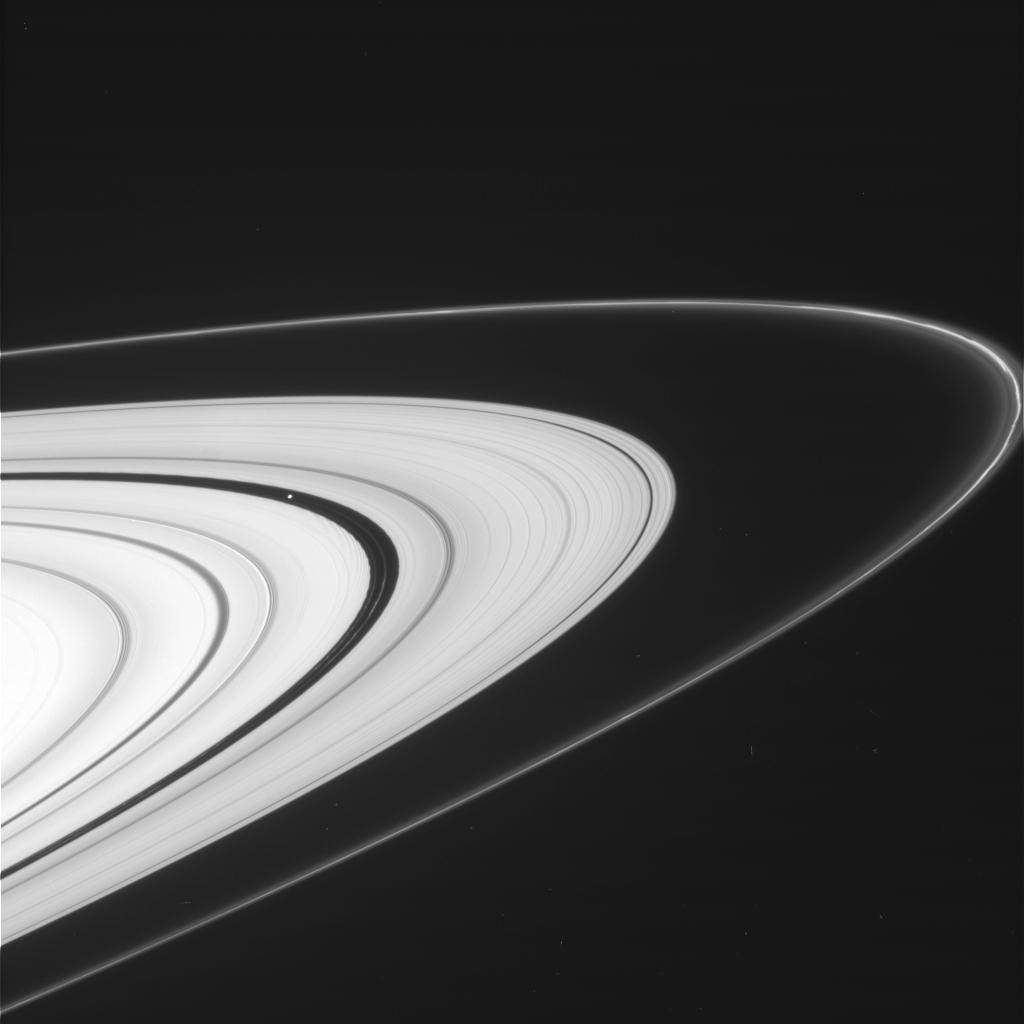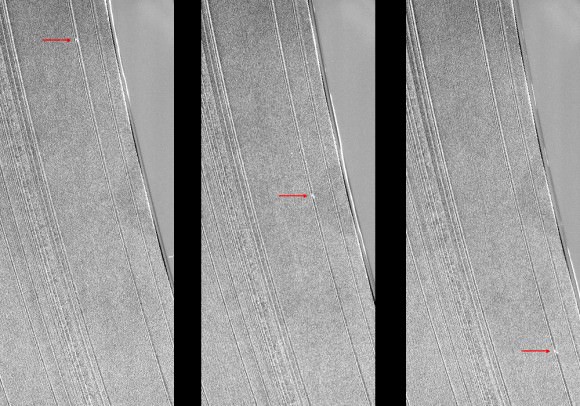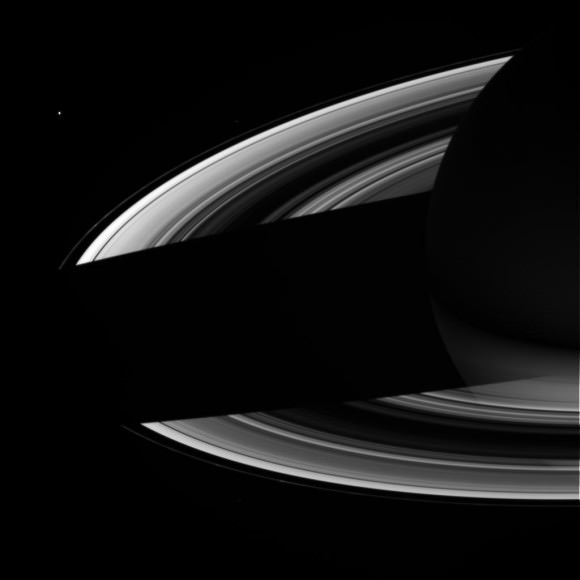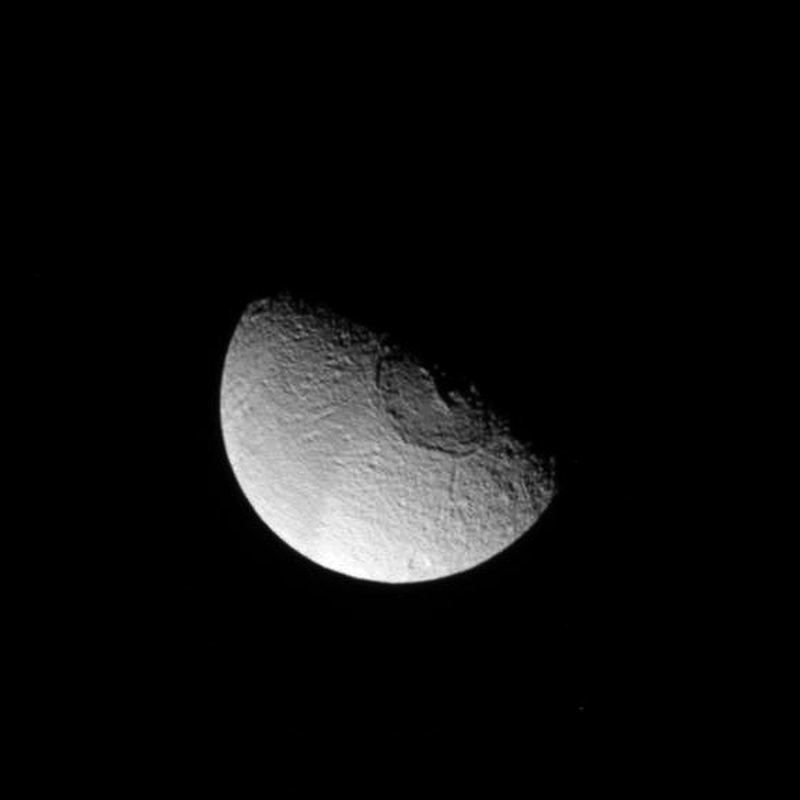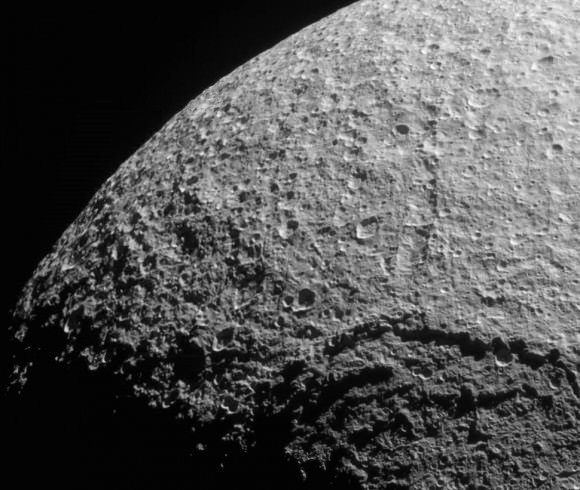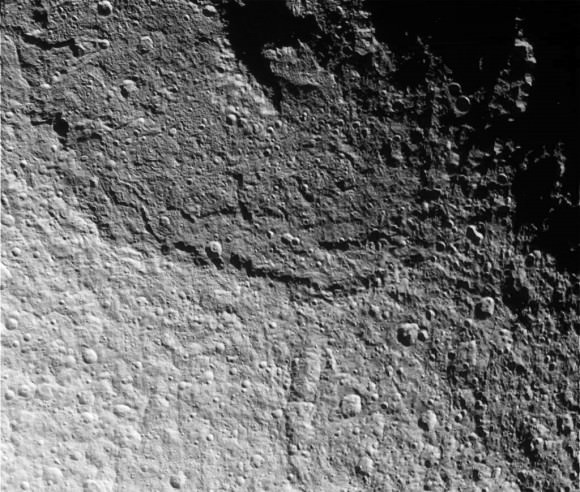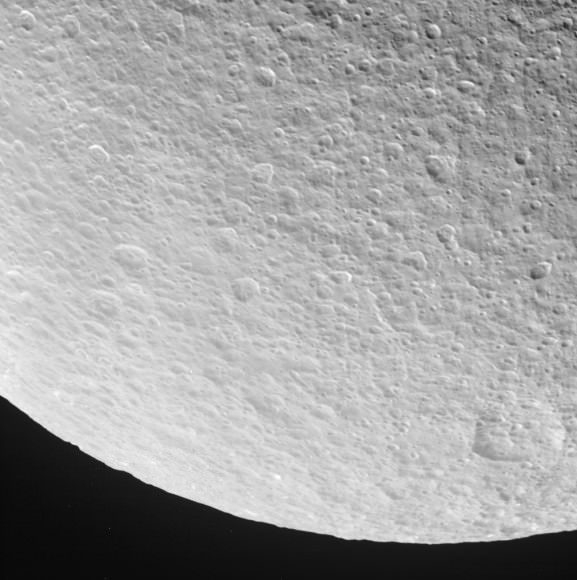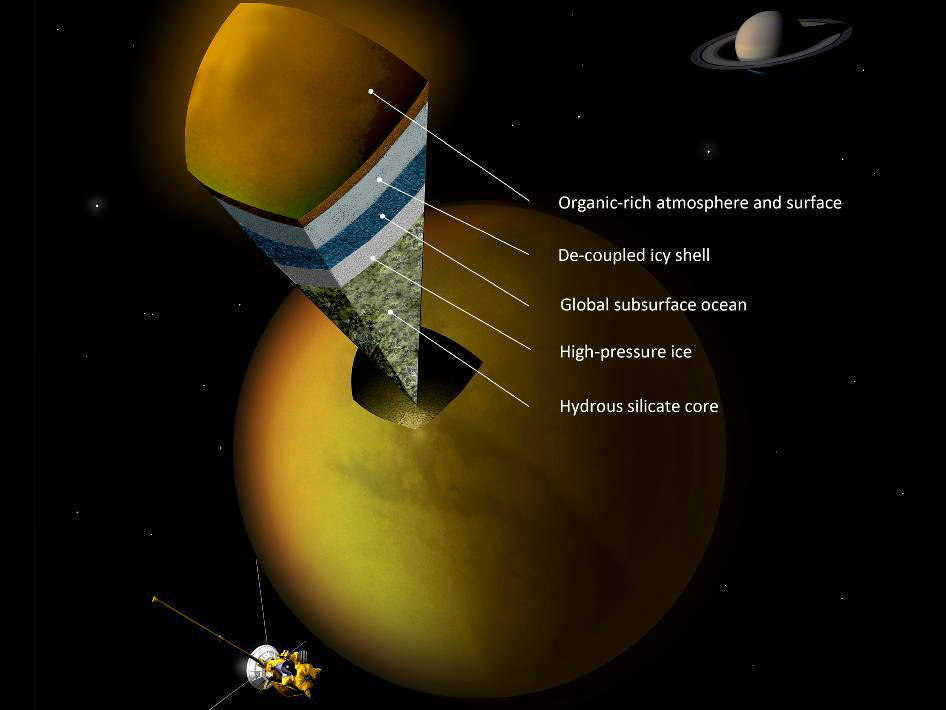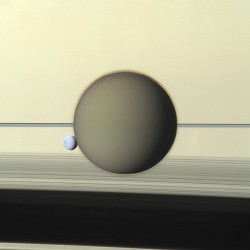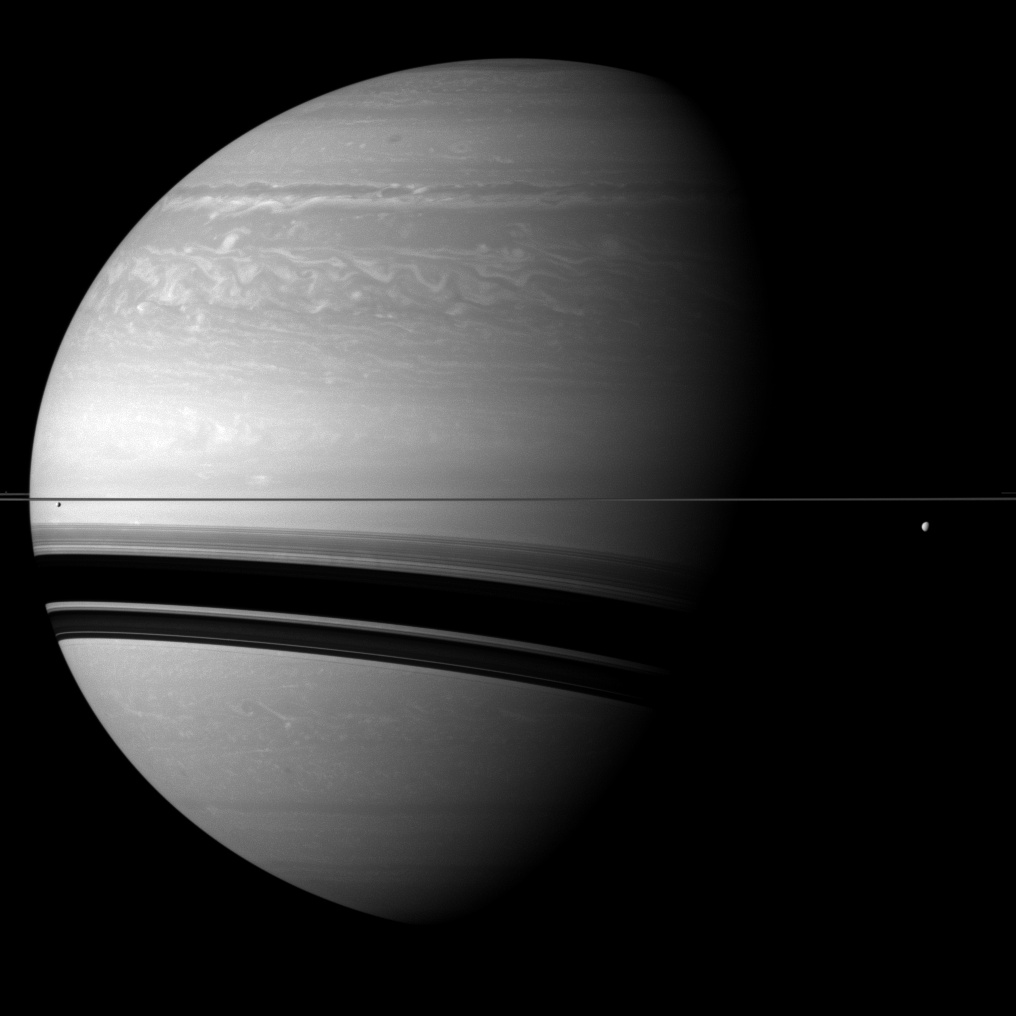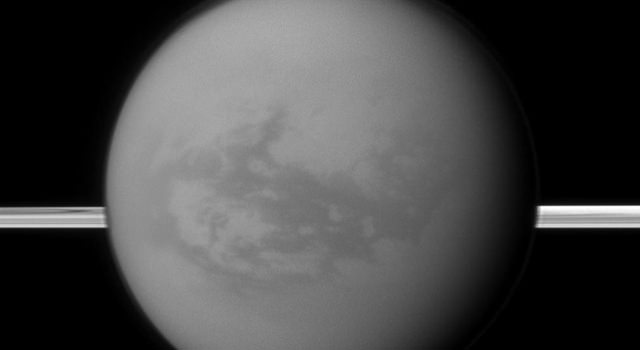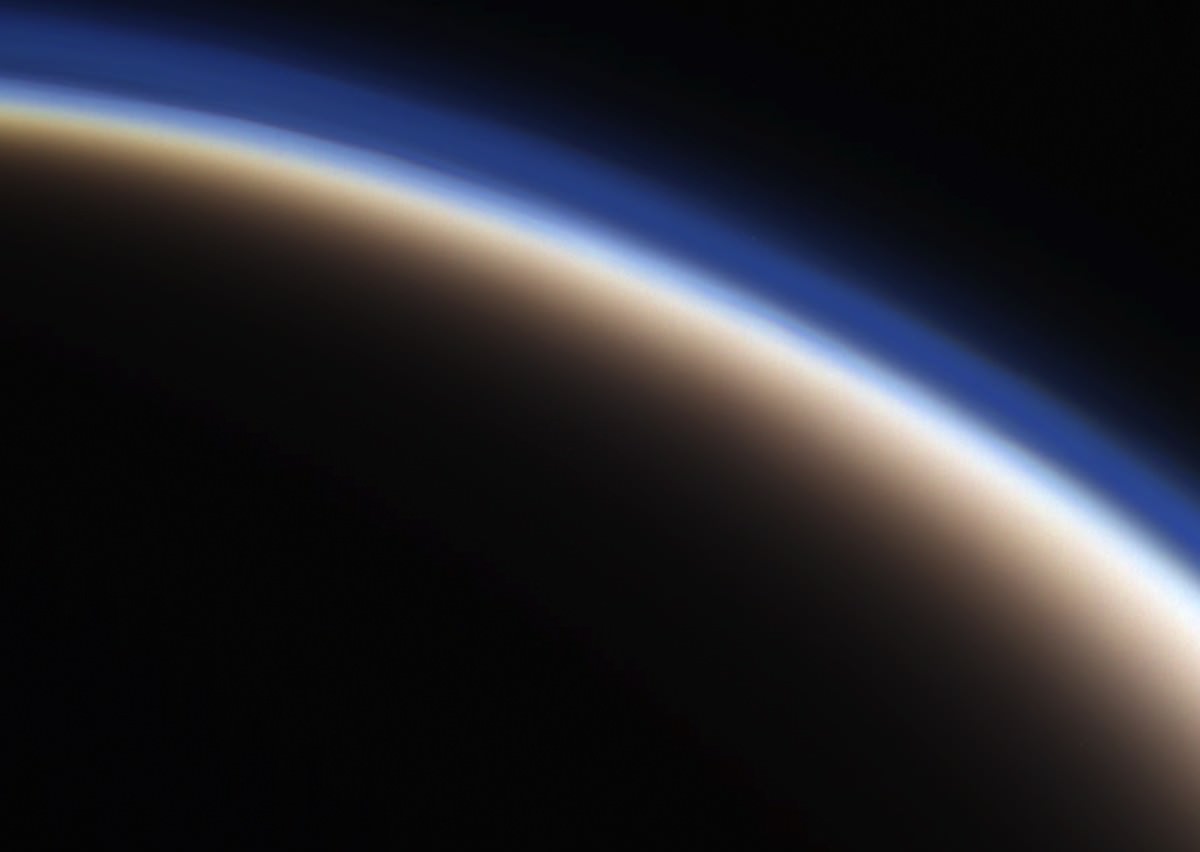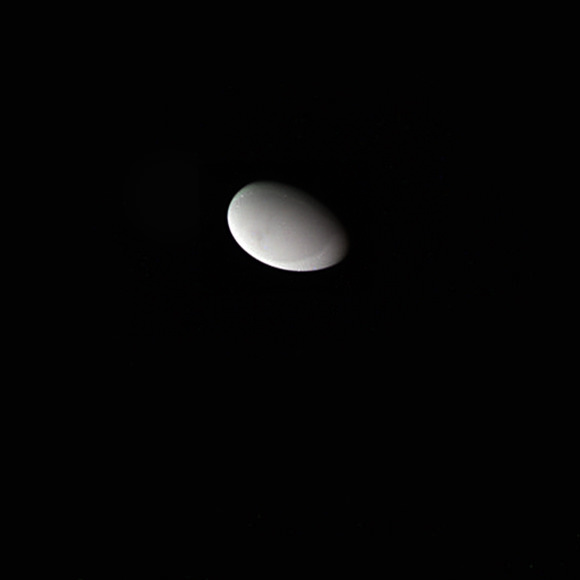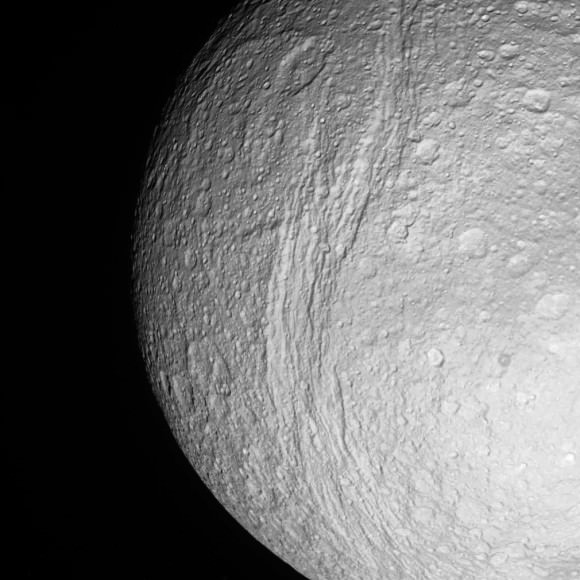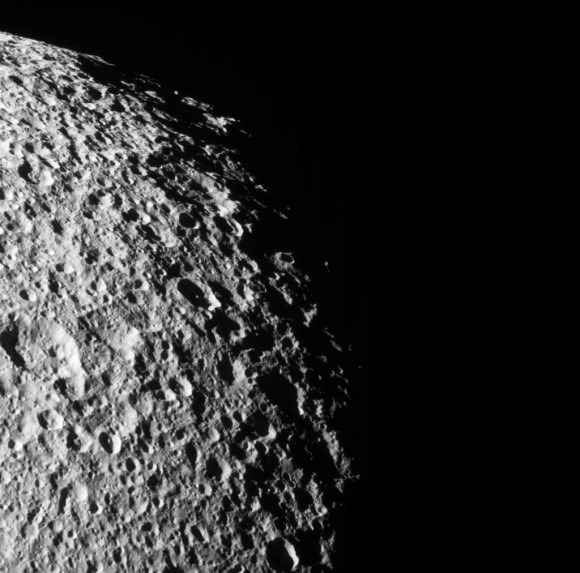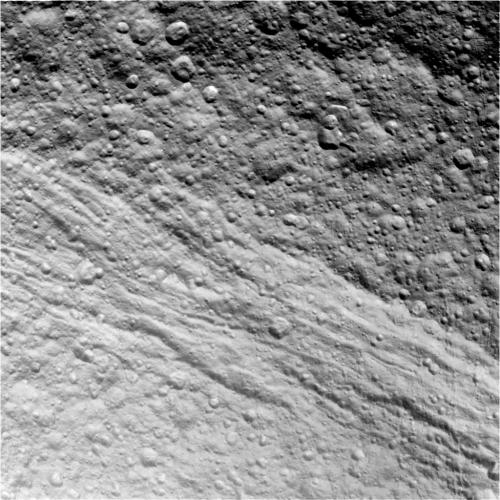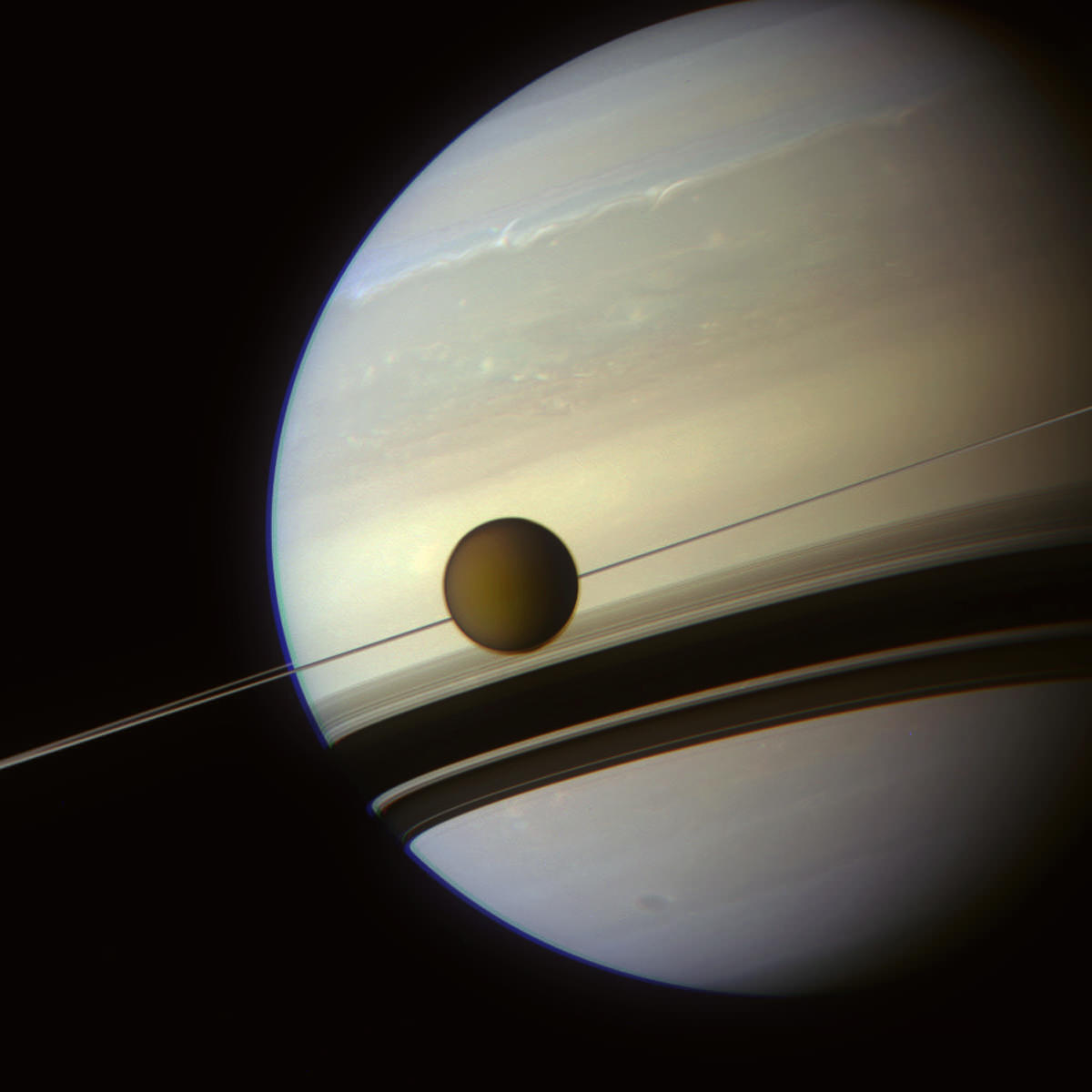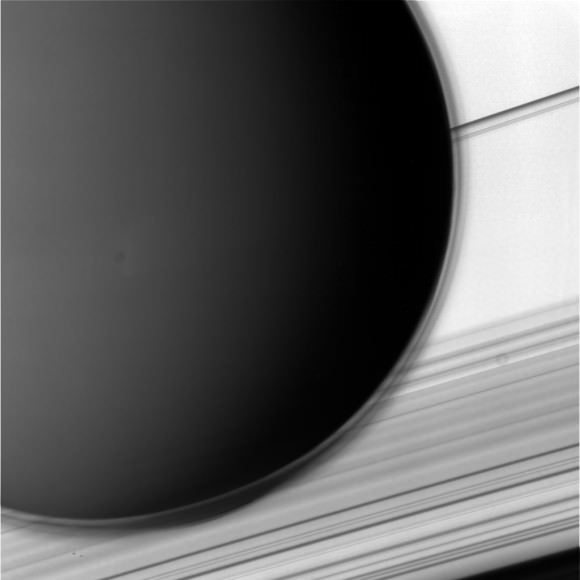An enormous storm that wrapped its way around Saturn’s northern hemisphere during the first half of 2011 wasn’t just a churning belt of high-speed winds; it also generated some monster flashes of lightning as well — one of which was captured on camera by the Cassini spacecraft!
Check it out…
The image above was created from Cassini raw images acquired in red, green, and blue color channels and assembled to create a somewhat “true-color” image of Saturn. The image shows the storm as it looked on February 25, 2011, a couple of months after it was first noticed by amateur astronomers on the ground. (The circle at upper left illustrates the comparative size of Earth.)
Read: Studying Saturn’s Super Storm
These images were acquired by Cassini almost two weeks later, on March 6, the first showing a bright blue flash of lightning within the storm, along the eastern edge of a large eddy. The second image, taken 30 minutes later, does not have any visible flash.
Because the flash was only visible in blue light (and there was no red channel data) the images are false color. Near-infrared replaced the visible red channel.
Based on the image resolution (12 miles/20 km per pixel) the size of the lightning flash is estimated to be about 120 miles (200 km) wide — as large as the strongest lightning seen on Earth. And like on Earth, Saturn’s lightning is thought to originate deeper in the atmosphere, at the level where water droplets freeze.
Although the 2011 northern storm was a great feature to observe, this wasn’t the first time lightning had been spotted on Saturn. Cassini had observed flashes on the ringed planet in August of 2009 as well, allowing scientists to create the first movie of lightning flashing on another planet.
Since its arrival at Saturn in 2004, Cassini has detected 10 lightning storms on Saturn — although with up to 10 flashes per second and eventually covering an area of 2 billion square miles (4 billion sq. km) the 2011 storm was by far the largest ever seen.
Image credits: NASA / JPL-Caltech / Space Science Institute. Top composite by J. Major. Video: JPL

